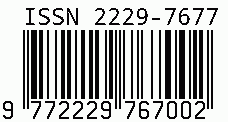
International Journal on Science and Technology
E-ISSN: 2229-7677
•
Impact Factor: 9.88
A Widely Indexed Open Access Peer Reviewed Multidisciplinary Bi-monthly Scholarly International Journal
Plagiarism is checked by the leading plagiarism checker
Call for Paper
Volume 16 Issue 4
October-December 2025
Indexing Partners



















Intrusion Detection using IoT with Deep Learning
| Author(s) | PRACHI BHIMRAO JADHAV |
|---|---|
| Country | India |
| Abstract | The rapid expansion of the Internet of Things (IoT) has led to a surge in interconnected devices, increasing the risk of cyber threats. Traditional Intrusion Detection Systems (IDS) often fail to handle the complexity and dynamic nature of IoT network traffic. This paper introduces a hybrid deep learning model that integrates Convolutional Neural Networks (CNN), Long Short-Term Memory (LSTM), and Artificial Neural Networks (ANN) to enhance intrusion detection performance. Trained on the BoT-IoT dataset, the proposed system achieves high accuracy and reliability, demonstrating its effectiveness in identifying malicious activity in IoT environments. |
| Keywords | Internet of Things (IoT), Intrusion Detection System (IDS), Cybersecurity in IoT, Deep Learning, Convolutional Neural Networks (CNN), Long Short-Term Memory (LSTM), Artificial Neural Networks (ANN), Hybrid Deep Learning Models, Network Traffic Analysis, Anomaly Detection, Supervised Learning, BoT-IoT Dataset, IoT Network Security, Sequential Data Modeling, Real-Time Threat Detection |
| Field | Computer > Artificial Intelligence / Simulation / Virtual Reality |
| Published In | Volume 16, Issue 3, July-September 2025 |
| Published On | 2025-08-03 |
| DOI | https://doi.org/10.71097/IJSAT.v16.i3.7490 |
| Short DOI | https://doi.org/g9vzgn |
Share this


CrossRef DOI is assigned to each research paper published in our journal.
IJSAT DOI prefix is
10.71097/IJSAT
Downloads
All research papers published on this website are licensed under Creative Commons Attribution-ShareAlike 4.0 International License, and all rights belong to their respective authors/researchers.

